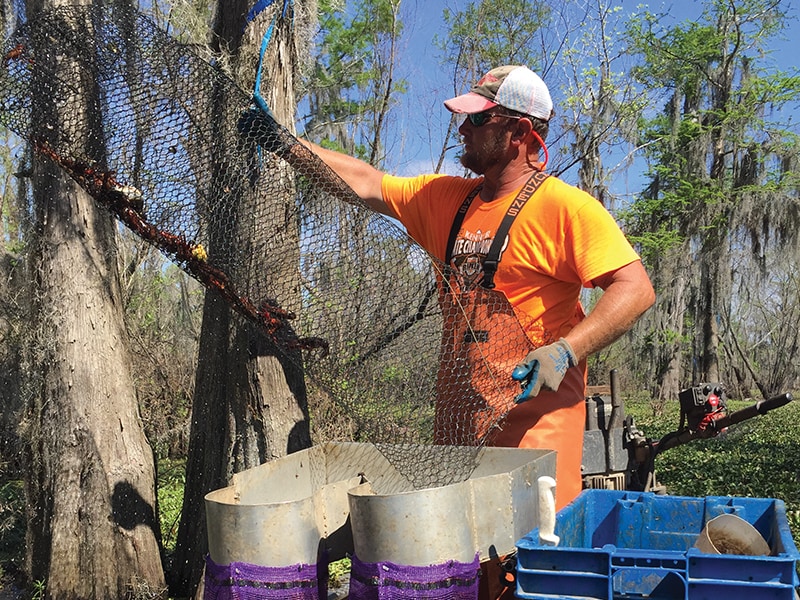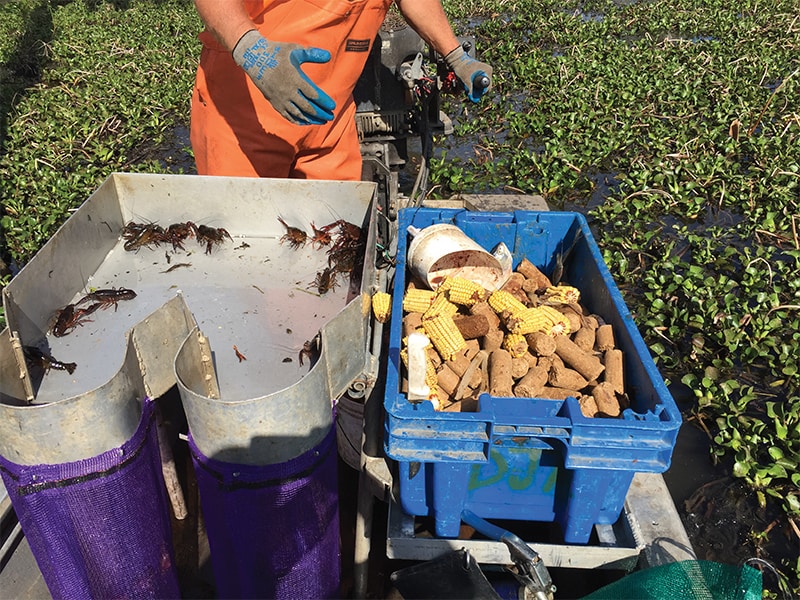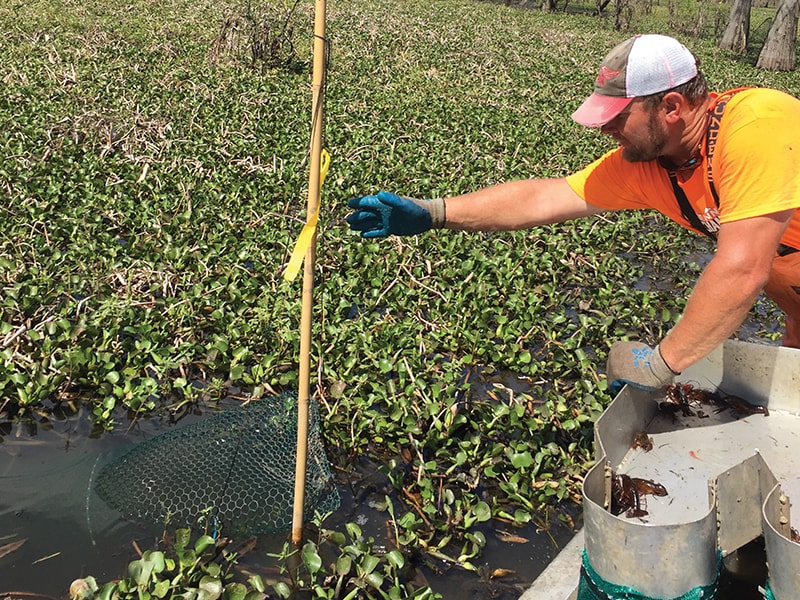Running the Crawfish Traps

Two of our Air Force friends, Michael Gaudet and Lloyd Smith, introduced Brenda and I to boiled crawfish, while stationed at Blytheville AFB, Arkansas in the early 1970's. Quite a treat for Missouri kids; we were familiar with crawfish (crawdads), but had never thought about eating them. Michael and Lloyd were both from south Louisiana and Lloyd said something like "95% of the nation's crawfish are caught in Louisiana and we eat 85% of what we catch." No wonder we had never thought of eating crawfish.
Through the years we've had the opportunity to order crawfish in restaurants a few times – from Louisiana or China or who knows where, but it was never quite the same. We even seined crawfish from a pond back home in Missouri once and cooked them up, but again not quite the same.
Fortunately, we've kept in touch with our friends from those Air Force years, sharing visits several times between Louisiana and Missouri. When we've visited them during the spring of the year, boiled crawfish in the backyard has always been part of the menu.

On our most recent visit, Michael had a surprise for us; one of his kinfolk, Derek, had a line of crawfish traps not far away and we had an invitation to join him one morning as he "ran his traps." It's one thing to have a "crawfish boil" and learn to break off the tail and peel it, but it's another thing entirely to be able to ride along and check the crawfish traps in the swamps of Louisiana.
It would be real easy for a newcomer to get lost in these swamps. They are large, flat, forested areas, that hold a few feet of water during the wet season. Transportation is via motor boat, through the various canals and pipeline cuts; it felt odd, but I never had a sense of direction.
Derek's boat was set up for one-person operation. He motored us through the shallow swamp from one trap to another; emptied the trap onto a sorting table, threw away the old bait and put in new. Then the trap went back into the water and we motored lightly to the next trap. I don't know if this would qualify for a "bucket list" item, but it was sure an interesting morning, and we cooked the crawfish for dinner a few hours later.

